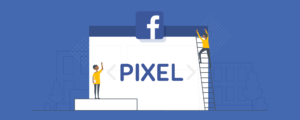

If you’re looking to increase conversion rates and grow your online visibility, then a winning smile is only going to get you so far. The most beautifully designed ads in the world might get your click rates up, but if there’s no substance behind that smile, your conversion rates (and your Google ranking) are going to suffer.
But if you pair those ads and search terms with bespoke landing pages then, as the saying goes, you’re cooking with gas!
Stick the kettle on and settle in for some Net Vis knowhow on how to increase your conversion rates and make Google your bestie with the magic of landing pages.
What’s a landing page?
OK, first things first. A landing page is a standalone web page created specifically for marketing or advertising purposes. Think of landing pages as targeted entry points for potential customers, guiding them towards your desired actions.
Landing pages are designed for exactly this purpose. They capture the attention of visitors and encourage them to take a specific action, such as signing up for a newsletter, booking a class, making a purchase, or requesting more information.
What does a good landing page look like?
Unlike your common or garden web page, a landing page has a focused objective and minimal distractions. It contains relevant information and a clear call-to-action.
Think of your landing page as a specialist tool. Whilst your general website navigation is of course important to your customer journey. A landing page has one job to do – and it needs to do it well.
Here’s what we’d suggest:
NB: Make sure your landing pages incorporate the key words and search terms you’re already using. Including these keywords ensures your landing page reflects the language your customers understand and improves both SEO and user experience.
How many landing pages do I need?
There is no right answer here. Quite simply, you need as many landing pages as you need. For example, if you’re looking to add landing pages for your Google ads – we would always recommend each group of keywords/ad group has its own landing page. So, if you’re targeting people who search for ‘mountain bikes, ‘mountain bicycles’, ‘off road bikes’ and ‘off road bicycles’ – you should have a separate page for each of those terms using that specific language.
How do landing pages help with SEO
When it comes to Google Ads campaigns, matching each ad group with a dedicated landing page is vital. If you’re bidding on ‘red trainers’, ‘red gym shoes’ and ‘red running shoes’ each keyword should lead to a bespoke landing page that’s optimised with the relevant content and matching language.
Google rewards ads that direct users to specific relevant landing pages by positioning them higher in the search engine rankings. So, by matching your landing pages to your ad groups, you’ll improve your Google Ads Quality Score and enhances your visibility in search results. In short, it makes Google ‘like’ you.
Landing pages also support organic SEO efforts too. Search engines prioritise sites that deliver relevant content and a seamless user experience. Basically, it’s a win-win. By creating targeted landing pages for your keyword groups, you’ll drive better results across your whole digital marketing strategy.
Winning at life.
Clear and specific landing pages ensure you’re showing the right thing to the right people. It’s worth creating them for all your different product and service offerings. Cover all bases and you won’t go far wrong.
Each landing page clarifies your offer and drives recognition from Google that you’re a well-behaved website. It pushes you up search rankings and guides your customers to exactly where they should be. Which of course is on your site clicking that CTA button!
Implement specific landing pages and you’ll be winning friends and influencing people before you can say ‘thanks Net Vis, you’re a font of knowledge.’
Now, if this feels like a LOT of work, and you’re not sure you could stick the landing (if you’ll pardon the pun) then get in touch.
Let us use our considerable experience and expertise to improve your site success. We can take the data from your ad campaigns (or set up tracking on your site) to find out exactly what landing pages you need. We’ll even work with your developer to get those pages up and working hard for you. Now that’s got to feel like winning at life, right?
